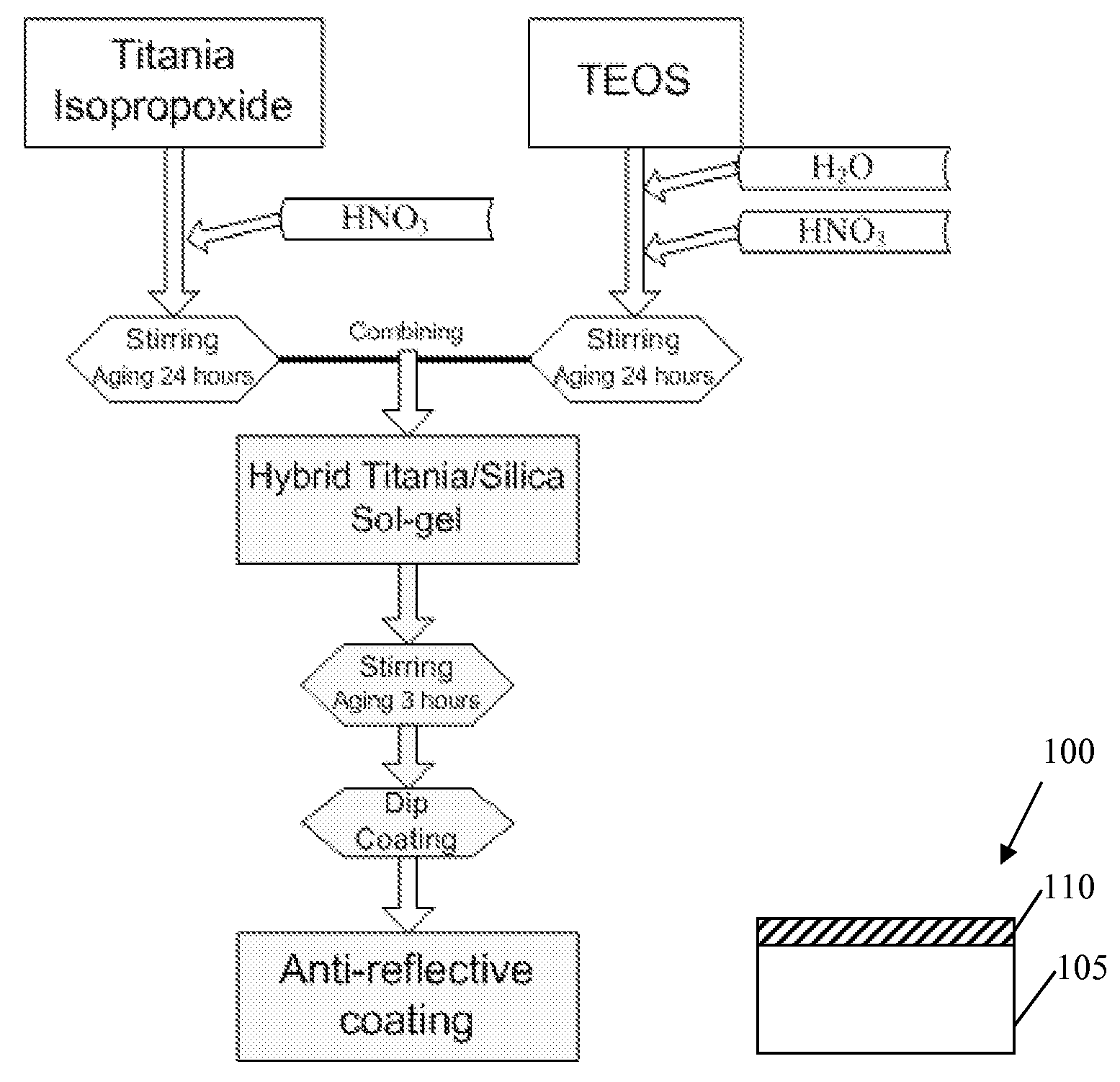Sol-gel composite ar coating for ir applications
a composite ar coating and infrared technology, applied in the field of infrared transmissive articles, can solve the problems of complex coating properties, significant transmission losses, and limited current ar coating fabrication techniques
- Summary
- Abstract
- Description
- Claims
- Application Information
AI Technical Summary
Benefits of technology
Problems solved by technology
Method used
Image
Examples
examples
[0040]It should be understood that the Examples described below are provided for illustrative purposes only and do not in any way define the scope of the invention.
[0041]As described above, FIG. 1 is a flow chart detailing steps to create an exemplary composite sol-gel coating according to an embodiment of the invention which will be utilized in the present example. The first component comprised a silica sol-gel which was created with equal parts tetraethylorthosilicate (TEOS) (+99%) and ethanol (anhydrous, 85%). The sol reaction utilizes nitric acid for hydrolysis and DI water, added drop wise, for water condensation. The sol was then covered, to prevent evaporation, and was then left for aging for a day.
[0042]The second component of the composite sol-gel is the titania. The titania film component was formed using titanium (IV) Isopropoxide (97%), 2-Propanol (Grade GC, 99.7%), and DI water. Isopropoxide was added to the propanol to avoid evaporation.
[0043]The two sol-gel components...
PUM
| Property | Measurement | Unit |
|---|---|---|
| thickness | aaaaa | aaaaa |
| particle size distribution | aaaaa | aaaaa |
| refractive index | aaaaa | aaaaa |
Abstract
Description
Claims
Application Information
 Login to View More
Login to View More - R&D
- Intellectual Property
- Life Sciences
- Materials
- Tech Scout
- Unparalleled Data Quality
- Higher Quality Content
- 60% Fewer Hallucinations
Browse by: Latest US Patents, China's latest patents, Technical Efficacy Thesaurus, Application Domain, Technology Topic, Popular Technical Reports.
© 2025 PatSnap. All rights reserved.Legal|Privacy policy|Modern Slavery Act Transparency Statement|Sitemap|About US| Contact US: help@patsnap.com



